We may earn money or products from the companies mentioned in this post. This means if you click on the link and purchase the item, I will receive a small commission at no extra cost to you ... you're just helping re-supply our family's travel fund.
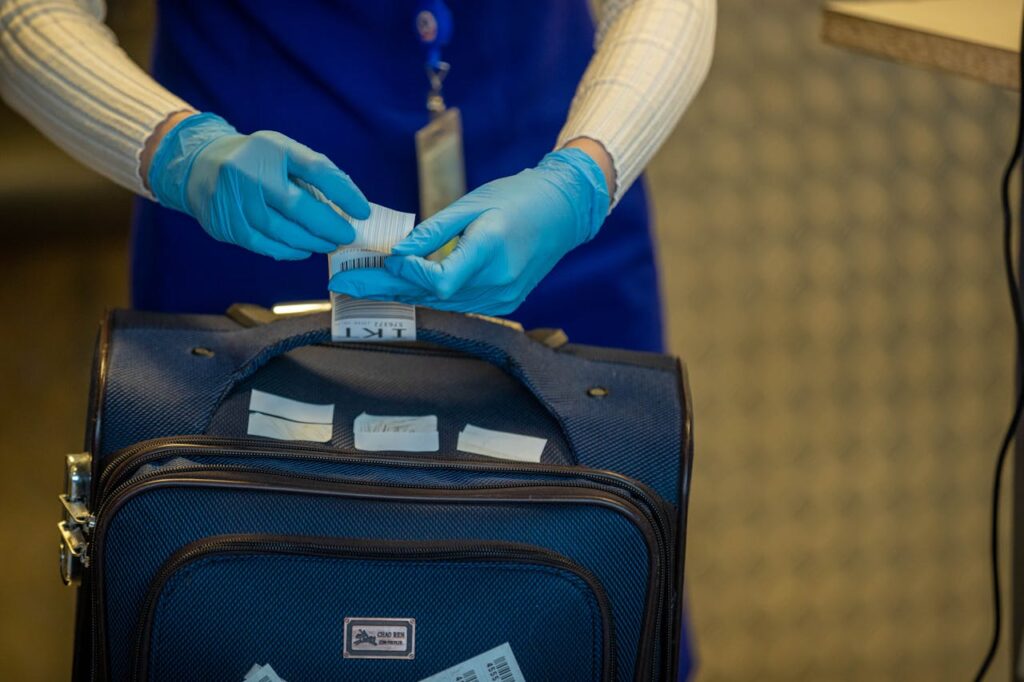
You move faster when your bag moves with you, which is why baggage tags deserve more attention than they get. In 2025, scammers play on small moments at kiosks, curbs, and carousels to reroute luggage, copy your data, or walk off with your gear while you think it is safe. A few habits close the door on those tricks. You will learn what to watch, what to photograph, and when to say no. The goal is simple: your bag leaves with you, arrives with you, and stays yours in between.
The Helpful Kiosk Helper Who Prints the Wrong Tag
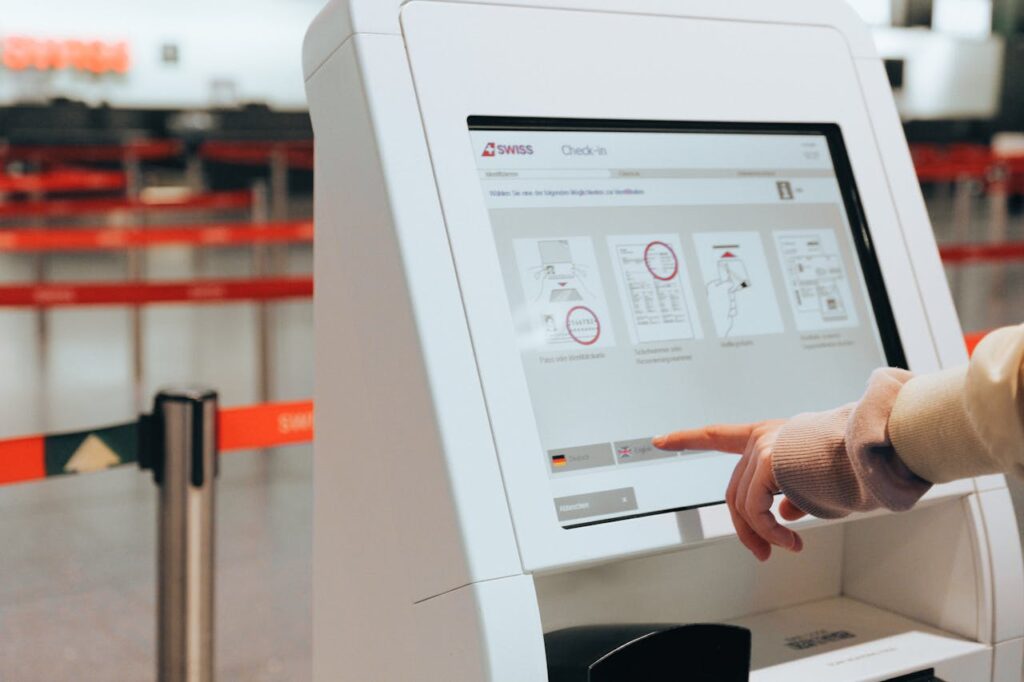
At self-service kiosks, a friendly stranger offers to help print your tag, then steers the screen to a different city or slips on a tag they brought with them. You hand over your passport, they gain enough data to meddle with your booking and baggage. Decline help from anyone not in uniform with a visible airline ID. Print the tag yourself, double-check the three-letter airport code and your name, and photograph the tag and claim stub before the bag rolls away.
Quiet Tag Swap While You Wait in Line

Crowded queues make easy cover for a quick sticker switch. A scammer brushes your bag and replaces your claim sticker or the tag tail, then claims your suitcase at the carousel while you chase theirs. Keep the small claim sticker on your ID or inside your passport cover, not on the bag. Before leaving baggage claim, match three items every time: your name, flight number, and the last four digits on the tag barcode. A fast photo of all three helps if staff need to trace it.
Old Stickers That Send Your Bag Elsewhere
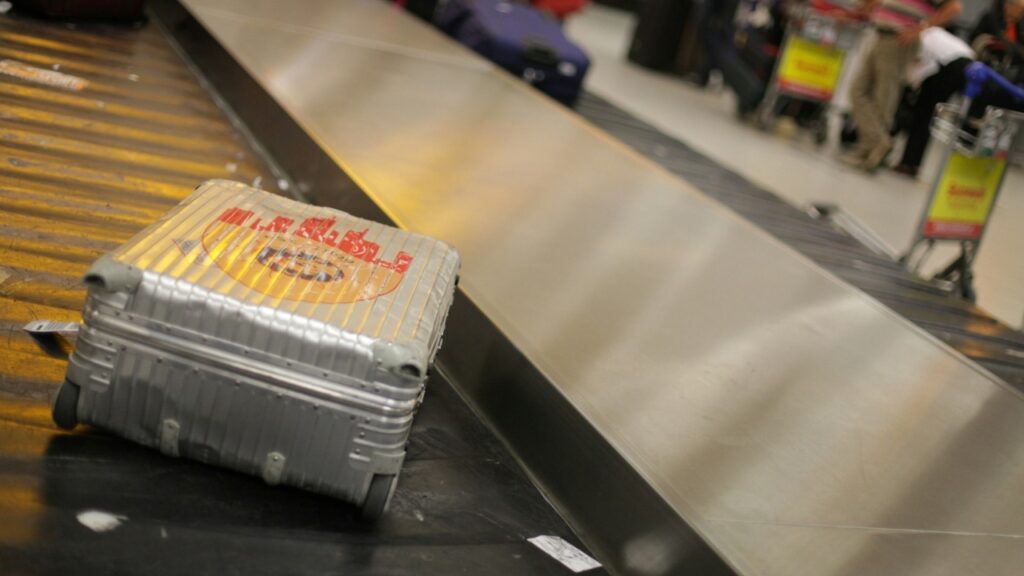
Old barcodes are not harmless souvenirs. Automated sorters can still read them, and thieves sometimes add outdated tags to create chaos while they lift an unguarded bag. Strip every barcode, including tiny routing labels on the handle, seams, and bag bottom, and peel residue until only clean fabric remains. Ask the agent to refuse extra stickers you do not need. A clean shell and one current tag is your best defense against misrouting and opportunists who hunt confusion.
Phishing QR Codes on Lost and Found Tags
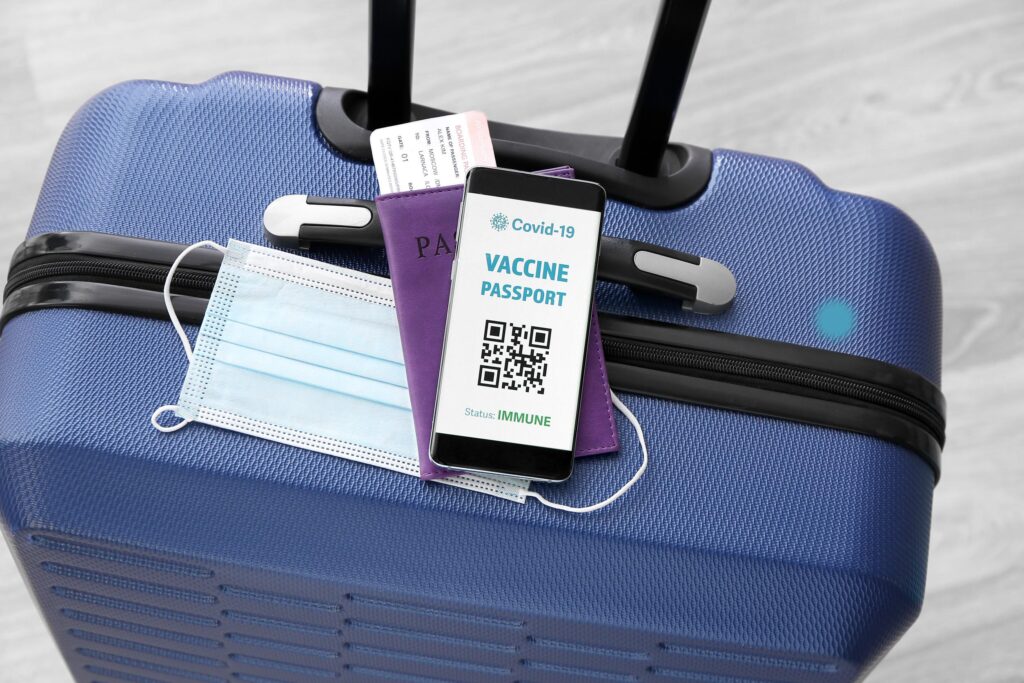
Smart tags with QR codes promise easy returns, which makes them perfect bait for phishers. Scammers place a tiny overlay near your handle that points to a fake airline page and asks for your name, phone, and booking code. Buy tags from reputable brands, register them at home, and avoid scanning any code you did not place on your luggage. If you must scan, open links in your phone browser, not a random app, and never enter payment details from a code found in a public space.
Fake Priority Tags Sold Curbside
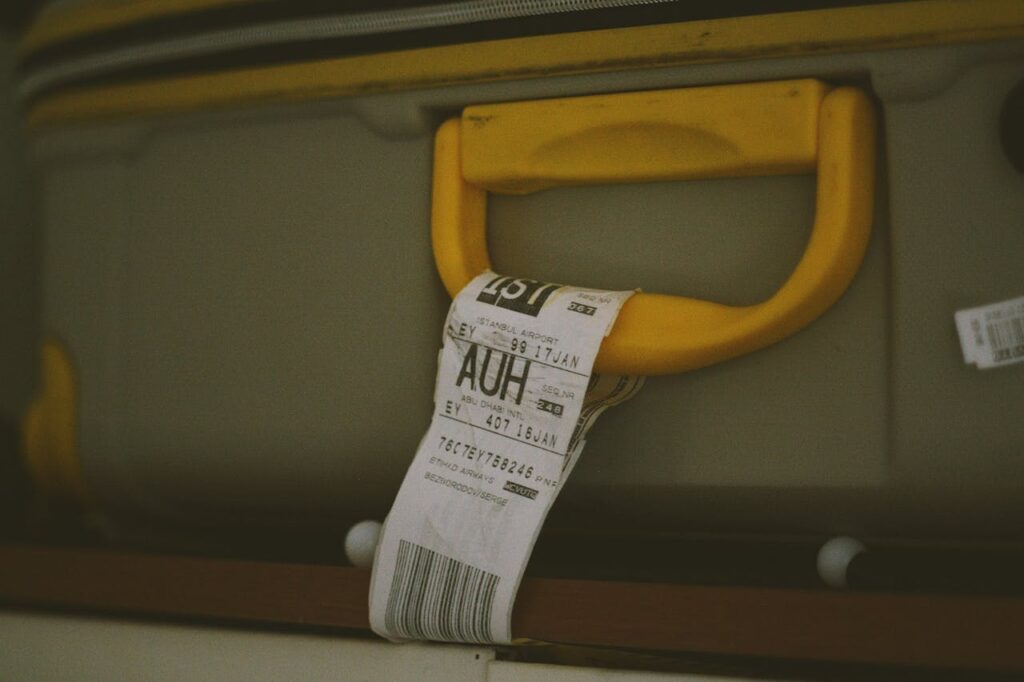
Outside the terminal, vendors sell priority or crew tags that look real. They promise faster handling, but counterfeit tags can push your bag into manual exception lanes where items sit unmonitored and are easier to lift. Only airlines add priority at check-in, and it is tied to your booking, not a sticker. If someone offers a tag for cash, walk away. Ask the counter to confirm your bag’s handling status and watch the agent attach the correct tag in front of you.
Rogue Updates to Your Electronic Bag Tag
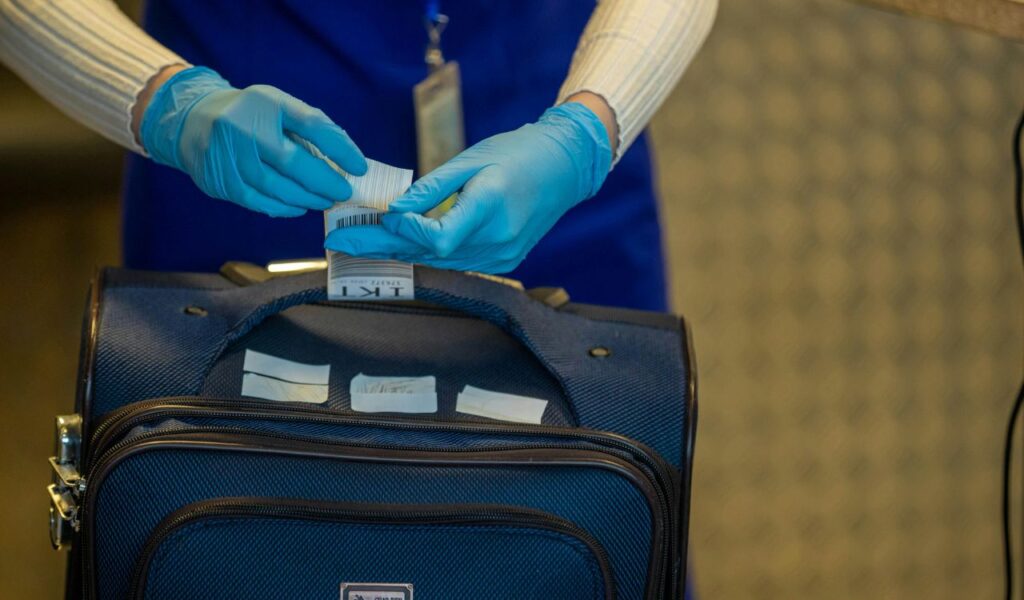
E-ink luggage tags are handy, but open airport Wi-Fi can be bait. A spoofed airline hotspot may trick you into logging in, then push a bogus destination to your tag or steal credentials. Update e-tags on cellular data inside the official airline app, then disable pairing until you arrive. Set a passcode for any connected suitcase. Before you hand over the bag, verify the airport code, name, and flight on the e-ink display and take a photo for your records.
Posting Your Claim Stub Online
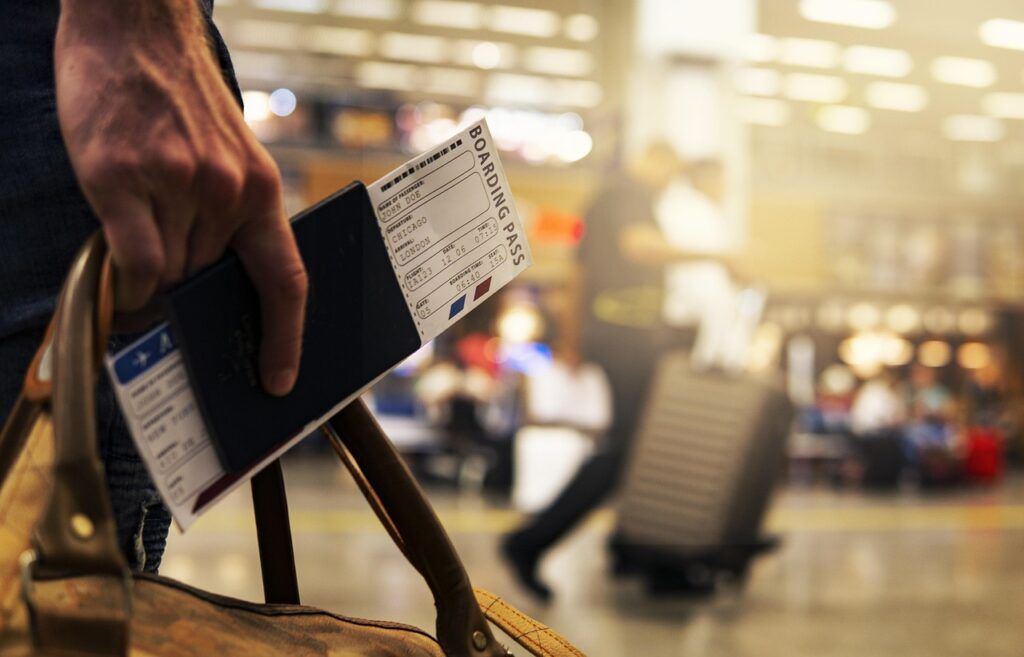
A quick photo of your tag on social media can expose your full name, record locator, and routing. With that, a scammer can call the airline, impersonate you, and redirect your bag. Do not post photos of boarding passes or tags. If you need a record, store images on your phone, not publicly in the cloud, and crop barcodes and surnames. At the carousel, compare the four-digit suffix on the paper tag to the number on your claim sticker before you lift the bag.
Retag Fee Shakedown Near the Counter
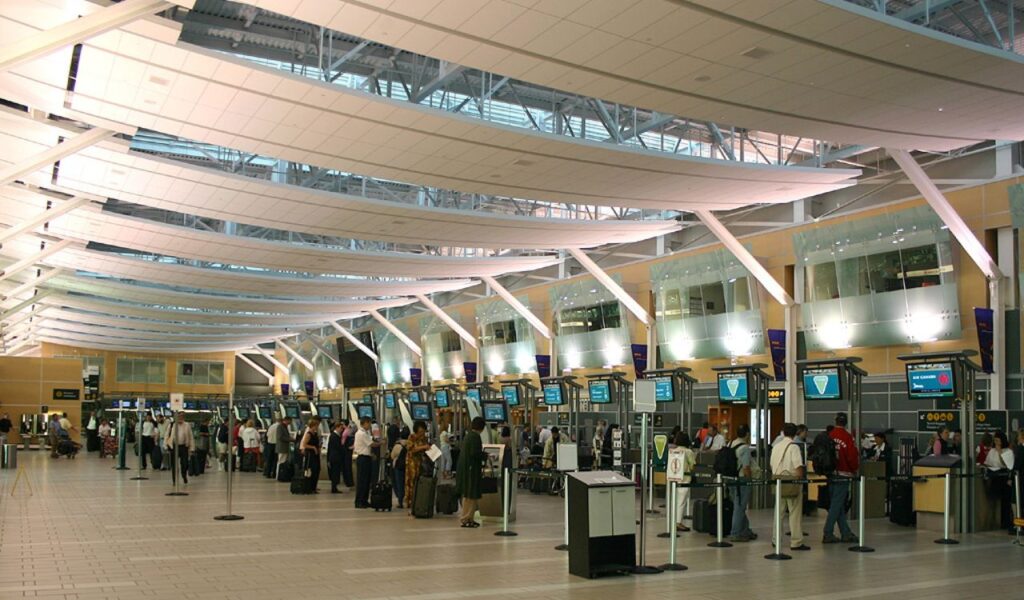
A person in a reflective vest says your tag is invalid and offers to retag it for a fee, then disappears with your suitcase. Payment for bag services does not happen in cash at the queue. If anyone approaches you, keep a hand on the handle and ask them to walk with you to the staffed airline counter. Pay only at a register and demand a printed receipt. If a bag goes out of sight, cancel the check-in, report the interaction, and retag with a verified agent present.
Carousel Distraction and Lookalike Switch
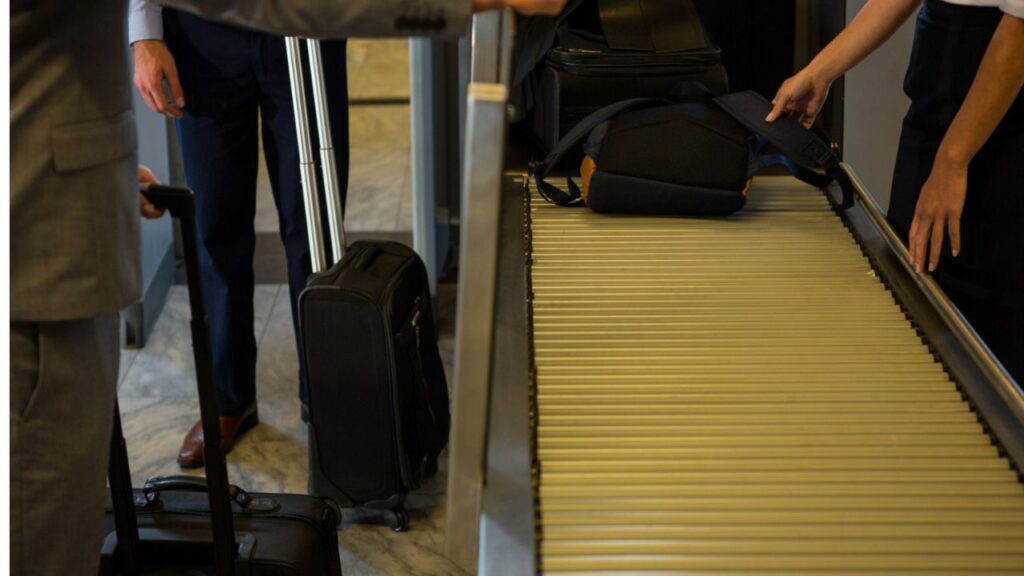
Two travelers distract you at the carousel by asking for directions while a third slides your tag tail onto a similar suitcase. You leave with the wrong bag, then get a message demanding a reward to swap back. Mark your suitcase with a bright strap, interior ID card, and a phone number that forwards to voicemail. Before you exit, check the tag suffix and your initials on the name strip. If anything is off, flag an agent before leaving the secure area.
Mandatory Airport Wraps With Data Harvesters
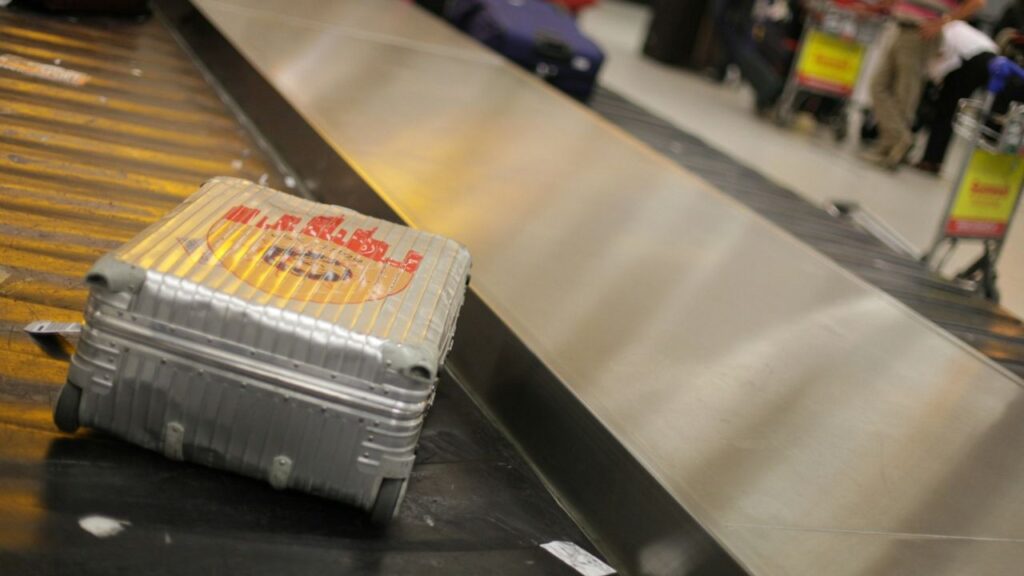
Some kiosks pitch paid plastic wraps as required for security and print a compliance tag with an NFC chip. Scammers use those chips to harvest contacts when your phone brushes the handle. Airport wraps are optional. If you like a cover, bring your own reusable sleeve without electronics. Skip any service that asks for your email or passport number at a non-airline kiosk. The only tag that matters to handlers is the one printed and attached by airline staff.